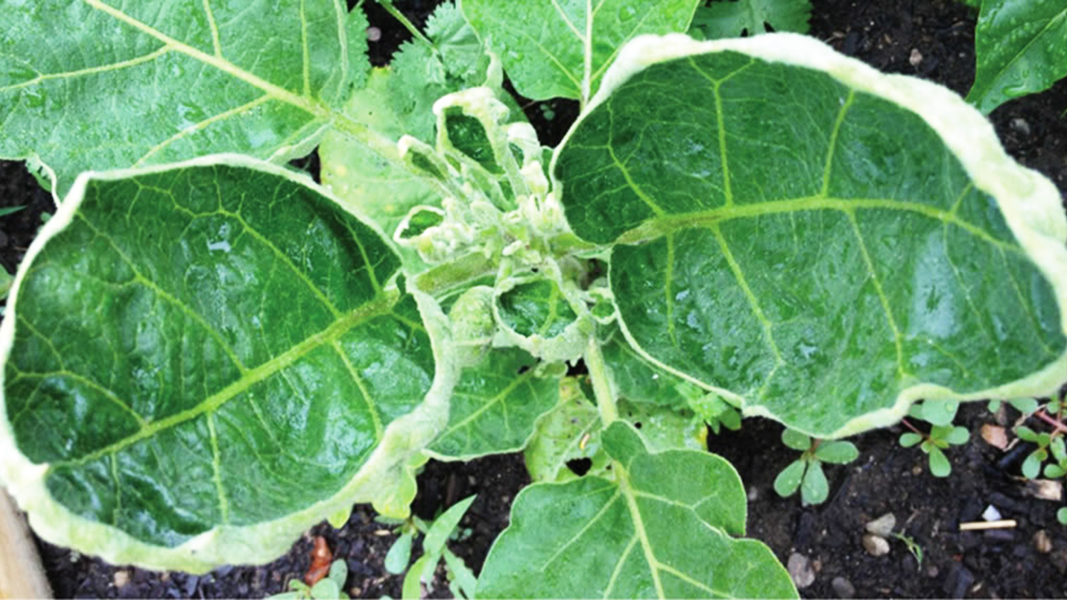Top: Phytotoxic impacts of persistent herbicide residue in compost include curling and twisting of plant leaves. Photo excerpted from BioCycle article.
The persistent herbicide clopyralid showed up in test results of finished compost blends applied to gardens in Oregon and Washington during the spring and summer of 2020. These episodes prompted the Oregon Department of Environmental Quality (DEQ) to issue a new fact sheet, Herbicide Residues In Compost. State rules prohibit the use of clopyralid on residential or commercial properties.
Clopyralid and other herbicides in the same chemical family show up in finished compost every few years, according to the Oregon Department of Agriculture. These herbicides leave residues in compost that can damage sensitive garden plants, such as tomatoes, beans, peas, sunflowers, eggplant, parsley, potatoes, petunias, pansies, and cannabis, even at low concentrations of about two parts per billion. Most herbicides break down in a composting process. However, clopyralid and other herbicides in its chemical family, which also includes aminopyralid and picloram, are very slow to break down and residues may remain in finished compost.
Clopyralid residue is the most commonly found herbicide contaminating compost in the Northwest, according to DEQ. Testing in 2020 found the presence of clopyralid residue in a number of agricultural crops and wastes, including mushroom compost, dairy manure, straw and canola meal. Clopyralid residue may also be found in straw used for dairy and horse bedding and grains fed to livestock and poultry. Crops treated with clopyralid are banned as composting feedstock, but those materials are indistinguishable from crops not treated with clopyralid and sometimes still end up at composting facilities, which can contaminate finished compost.
The Fact Sheet suggests asking question before accepting organic waste from agricultural, golf course or other sources where clopyralid may be present. Examples include: “If you’re using vegetative waste from agriculture or landscaping, what herbicides were used on the landscape, hay, pasture or crop? If you’re using manure, what were the animals fed? Was it clopyralid free?” Links to a number of resources are included in the document.













